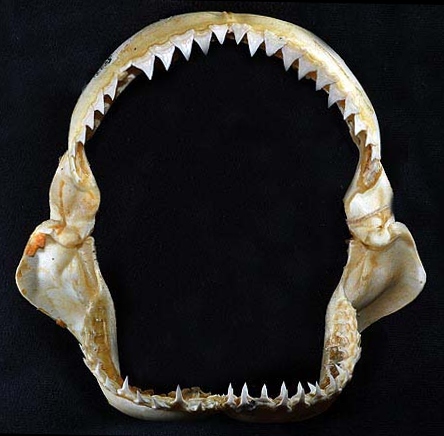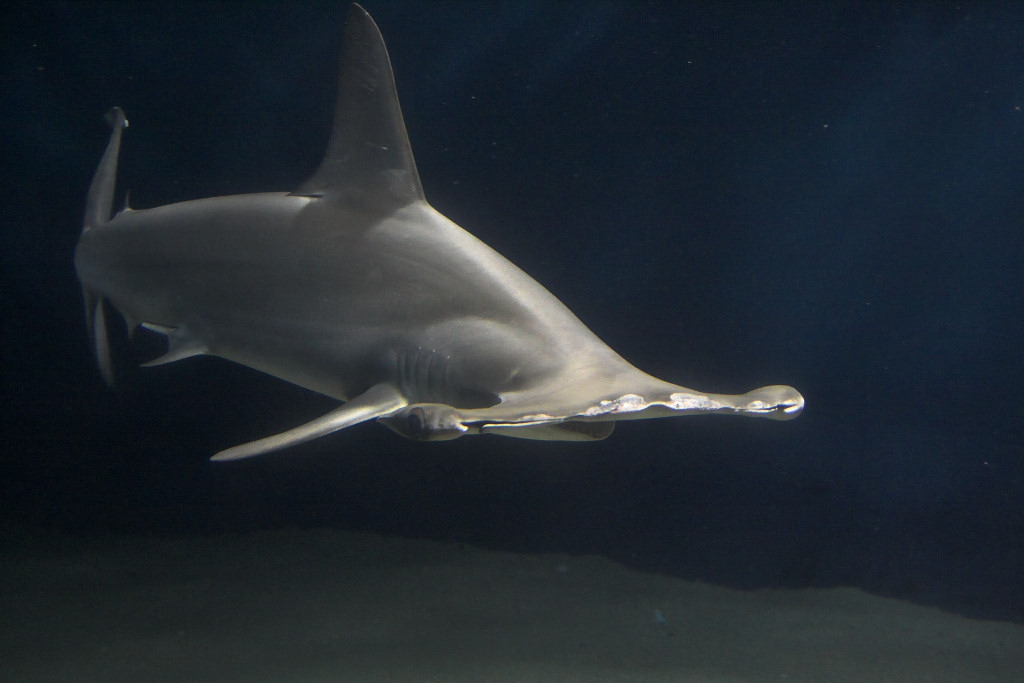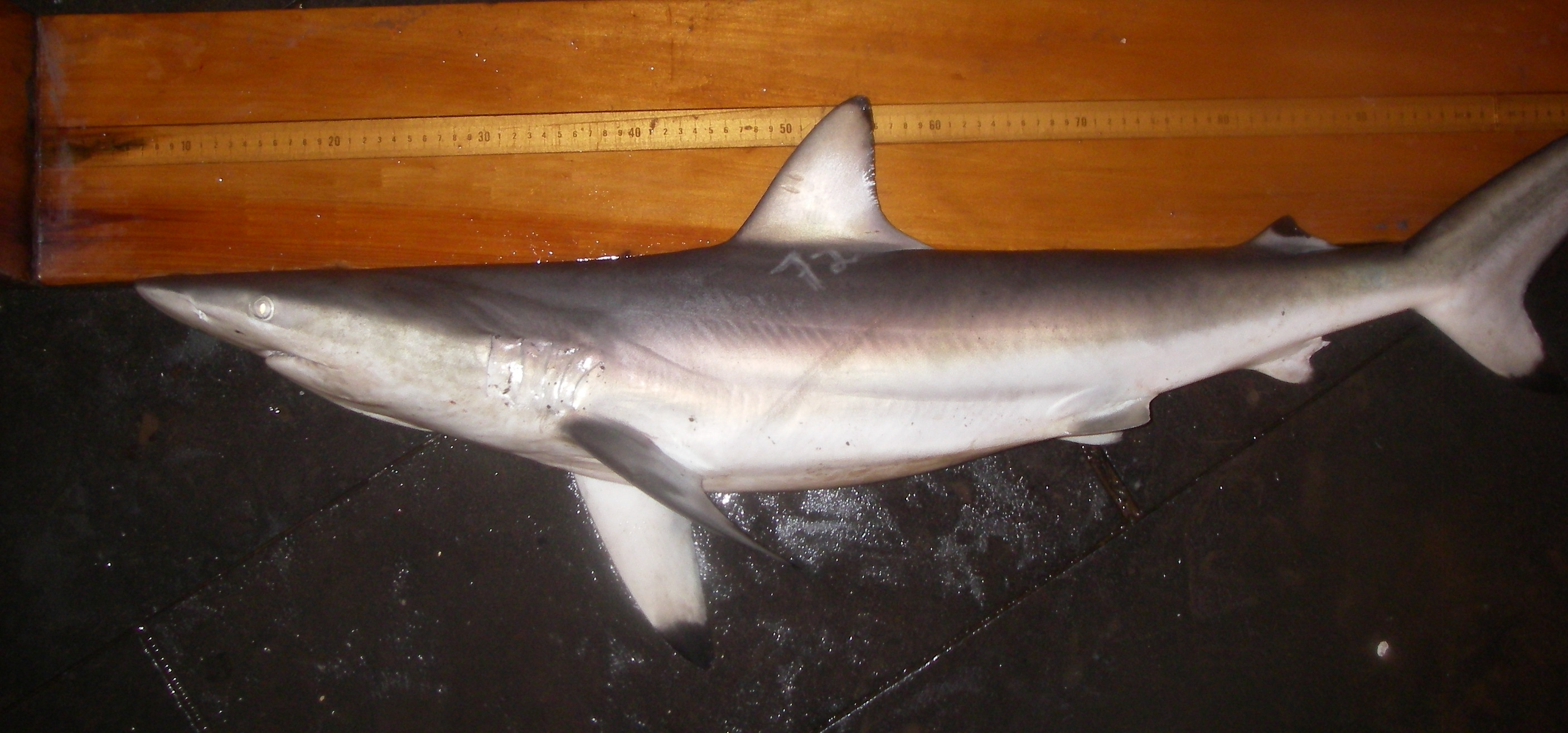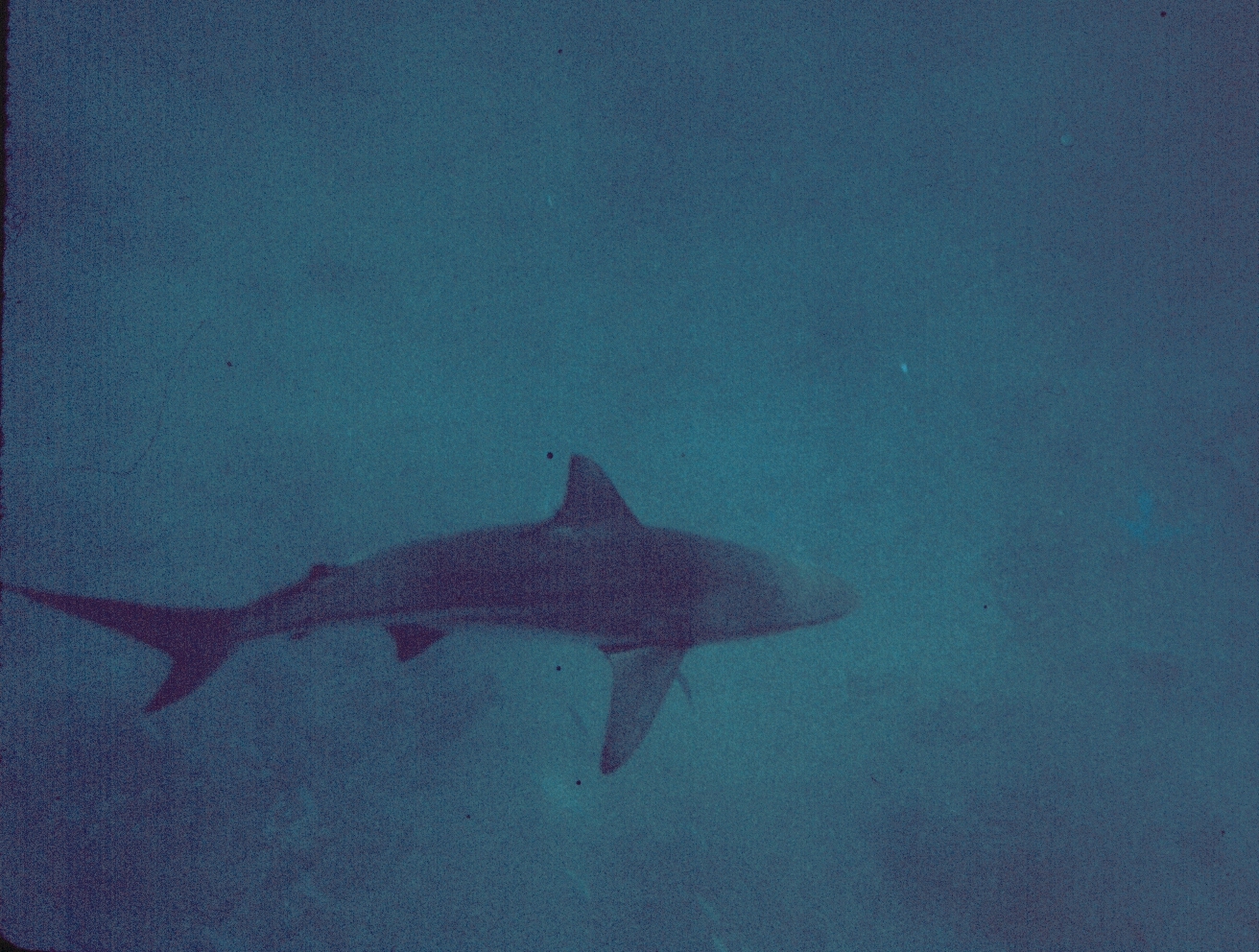|
Shark Finning
Shark finning is the act of removing fins from sharks and discarding the rest of the shark back into the ocean. This act is prohibited in many countries. The sharks are often still alive when discarded, but without their fins.Spiegel, J. (2000"Even Jaws deserves to keep his fins: outlawing shark finning throughout global waters" ''Boston College International and Comparative Law Review'', 24 (2): 409–438. Unable to swim effectively, they sink to the bottom of the ocean and die of suffocation or are eaten by other predators. Shark finning at sea enables fishing vessels to increase profitability and increase the number of sharks harvested, as they must only store and transport the fins, by far the most profitable part of the shark; the shark meat is bulky to transport. Many countries have banned this practice and require the whole shark to be brought back to port before removing the fins. Shark finning increased since 1997 largely due to the increasing demand for shark fins f ... [...More Info...] [...Related Items...] OR: [Wikipedia] [Google] [Baidu] |
Shark Fins
Sharks are a group of elasmobranch cartilaginous fish characterized by a ribless endoskeleton, dermal denticles, five to seven gill slits on each side, and pectoral fins that are not fused to the head. Modern sharks are classified within the Division (taxonomy), division Selachii and are the sister group to the Batoidea, Batomorphi (Batoidea, rays and skate (fish), skates). Some sources extend the term "shark" as an informal category including Extinction, extinct members of Chondrichthyes (cartilaginous fish) with a shark-like morphology, such as hybodonts. Shark-like chondrichthyans such as ''Cladoselache'' and ''Doliodus'' first appeared in the Devonian Period (419–359 million years), though some fossilized chondrichthyan-like scales are as old as the Ordovician, Late Ordovician (458–444 million years ago). The earliest confirmed modern sharks (Selachii) are known from the Early Jurassic around , with the oldest known member being ''Agaleus'', though records of true shar ... [...More Info...] [...Related Items...] OR: [Wikipedia] [Google] [Baidu] |
Pectoral Fins
Fins are moving appendages protruding from the body of fish that interact with water to generate thrust and help the fish swim. Apart from the tail or caudal fin, fish fins have no direct connection with the back bone and are supported only by muscles. Fish fins are distinctive anatomical features with varying structures among different clades: in ray-finned fish (Actinopterygii), fins are mainly composed of bony spines or rays covered by a thin stretch of scaleless skin; in lobe-finned fish (Sarcopterygii) such as coelacanths and lungfish, fins are short rays based around a muscular central bud supported by jointed bones; in cartilaginous fish (Chondrichthyes) and jawless fish (Agnatha), fins are fleshy " flippers" supported by a cartilaginous skeleton. Fins at different locations of the fish body serve different purposes, and are divided into two groups: the midsagittal ''unpaired fins'' and the more laterally located ''paired fins''. Unpaired fins are predominantly a ... [...More Info...] [...Related Items...] OR: [Wikipedia] [Google] [Baidu] |
Shortfin Mako Shark
The shortfin mako shark (; ; ''Isurus oxyrinchus''), also known as the shortfin mako, blue pointer, or bonito shark, is a large Lamniformes, mackerel shark. It is commonly referred to as the mako shark, as is the longfin mako shark (''Isurus paucus''). The fastest known shark species, able to reach speeds of in bursts, the shortfin mako can attain a size of in length and weigh . The species is classified as Endangered by the IUCN. Etymology "Mako" comes from the Māori language, meaning either the shark or a shark tooth. Following the Māori language, "mako" in English is both singular and plural. The word may have originated in a dialectal variation, as it is similar to the common words for shark in a number of Polynesian languages—''makō'' in the Ngāi Tahu, Kāi Tahu Māori dialect, ''mangō'' in other Māori dialects, ''mago'' in Samoan language, Samoan, ''ma'o'' in Tahitian language, Tahitian, and ''mano'' in Hawaiian language, Hawaiian. The first written usage is in S ... [...More Info...] [...Related Items...] OR: [Wikipedia] [Google] [Baidu] |
Lamniformes
The Lamniformes (, from Greek ''lamna'' "fish of prey") are an order (biology), order of sharks commonly known as mackerel sharks (which may also refer specifically to the family Lamnidae). It includes some of the most familiar species of sharks, such as the great white shark, great white as well as less familiar ones, such as the goblin shark and megamouth shark. Members of the order are distinguished by possessing two dorsal fins, an anal fin, five gill, gill slits, eyes without nictitating membranes, and a mouth extending behind the eyes. Species in two families of Lamniformes – Lamnidae and Alopiidae – are distinguished for maintaining a higher body temperature than the surrounding waters. Members of the group include Macro-predator, macropredators, generally of medium-large size, including the largest macropredatory shark ever, the extinct ''Otodus megalodon,'' as well as large planktivores. Although some authors have argued that the Late Jurassic ''Palaeocarcharias'' ... [...More Info...] [...Related Items...] OR: [Wikipedia] [Google] [Baidu] |
Porbeagle
The porbeagle or porbeagle shark (''Lamna nasus'') is a species of mackerel shark in the family Lamnidae, distributed widely in the cold and temperate marine waters of the North Atlantic and Southern Hemisphere. In the North Pacific, its ecological equivalent is the closely related salmon shark (''L. ditropis''). It typically reaches in length and a weight of ; North Atlantic sharks grow larger than Southern Hemisphere sharks and differ in coloration and aspects of life history. Gray above and white below, the porbeagle has a very stout midsection that tapers towards the long, pointed snout and the narrow base of the tail. It has large pectoral and first dorsal fins, tiny pelvic, second dorsal, and anal fins, and a crescent-shaped caudal fin. The most distinctive features of this species are its three-cusped teeth, the white blotch at the aft base of its first dorsal fin, and the two pairs of lateral keels on its tail. The porbeagle is an opportunistic hunter that preys ... [...More Info...] [...Related Items...] OR: [Wikipedia] [Google] [Baidu] |
Oceanic Whitetip Shark
The oceanic whitetip shark (''Carcharhinus longimanus'') is a large requiem shark inhabiting the pelagic zone of tropical and warm temperate seas. It has a stocky body with its iconic elongated rounded fins, with white tips. The species is typically solitary, though they may gather in large numbers at food concentrations. Bony fish and cephalopods are the main components of its diet and females give live birth. Though slow-moving, the shark is opportunistic and aggressive, and is reputed to be dangerous to shipwreck survivors. The IUCN Red List considers the species to be critically endangered. As with other shark species, the whitetip faces mounting fishing pressure throughout its range, with recent studies show steeply declining populations as they are harvested for their fins and meat. Taxonomy The oceanic whitetip shark is known by many other english common names: Brown Milbert's sand bar shark, brown shark, shipwreck shark, nigano shark, oceanic white-tipped whale ... [...More Info...] [...Related Items...] OR: [Wikipedia] [Google] [Baidu] |
Hammerhead Shark
The hammerhead sharks are a group of sharks that form the family Sphyrnidae, named for the unusual and distinctive form of their heads, which are flattened and laterally extended into a Hammerhead shark#Cephalofoil, cephalofoil (a T-shape or "hammer"). The shark's eyes are placed one on each end of this T-shaped structure, with their small mouths directly centered and underneath. Most hammerhead species are placed in the genus ''Sphyrna'', while the winghead shark is placed in its own genus, ''Eusphyra''. Many different—but not necessarily mutually exclusive—functions have been postulated for the cephalofoil, including sensory reception, manoeuvering, and prey manipulation. The cephalofoil gives the shark superior binocular vision and depth perception. Hammerheads are found worldwide, preferring life in warmer waters along coastlines and continental shelves. Unlike most sharks, some hammerhead species will congregate and swim in large Shoaling and schooling, schools during ... [...More Info...] [...Related Items...] OR: [Wikipedia] [Google] [Baidu] |
Bull Shark
The bull shark (''Carcharhinus leucas''), also known as the Zambezi shark (informally zambi) in Africa and Lake Nicaragua shark in Nicaragua, is a species of requiem shark commonly found worldwide in warm, shallow waters along coasts and in rivers. It is known for its aggressive nature, and presence mainly in warm, shallow brackish water, brackish and freshwater systems including estuaries and (usually) lower reach (geography), reaches of rivers. Their aggressive nature has led to ongoing shark-culling efforts near beaches to protect beachgoers, which is one of the causes of bull shark populations continuing to decrease. Bull sharks are listed as vulnerable on the IUCN Red List. Bull sharks are euryhaline and can thrive in both saltwater, salt and fresh water. They are known to travel far up rivers, and have been known to travel up the Mississippi River as far as Alton, Illinois, about from the ocean, but few freshwater interactions with humans have been recorded. Larger-sized ... [...More Info...] [...Related Items...] OR: [Wikipedia] [Google] [Baidu] |
Requiem Shark
Requiem sharks are sharks of the family Carcharhinidae in the order Carcharhiniformes. They are migratory, live-bearing sharks of warm seas (sometimes of brackish or fresh water) and include such species as the bull shark, lemon shark, blacktip shark, and whitetip reef shark. Family members have the usual carcharhiniform characteristics. Their eyes are round, and one or two gill slits fall over the pectoral fin base. Most species are viviparous, the young being born fully developed. They vary widely in size, from as small as adult length in the Australian sharpnose shark, up to adult length in the oceanic whitetip shark.Compagno, L.J.VFamily Carcharhinidae - Requiem sharksin Froese, R. and D. Pauly. Editors. 2010FishBase World Wide Web electronic publication, version (10/2013). Scientists assume that the size and shape of their pectoral fins have the right dimensions to minimize transport cost. Requiem sharks tend to live in more tropical areas, but tend to migrate. Fem ... [...More Info...] [...Related Items...] OR: [Wikipedia] [Google] [Baidu] |
Blue Shark
The blue shark (''Prionace glauca''), also known as the great blue shark, is a species of requiem shark, in the family Carcharhinidae and the only member of its genus which inhabits deep waters in the world's temperate and tropical oceans. Averaging around and preferring cooler waters, the blue shark migrates long distances, such as from New England to South America. It is listed as Near Threatened by the IUCN. Although generally lethargic, they can move very quickly. Blue sharks are viviparous and are noted for large litters of 25 to over 100 pups. They feed primarily on small fish and squid, although they can take larger prey. Some of the blue shark’s predators include the killer whale and larger sharks like tiger sharks and the great white shark. Their maximum lifespan is still unknown, but it is believed that they can live up to 20 years. They are one of the most abundant pelagic sharks, with large numbers being caught by fisheries as bycatch on longlines and nets. A ... [...More Info...] [...Related Items...] OR: [Wikipedia] [Google] [Baidu] |
Blacktip Shark
The blacktip shark (''Carcharhinus limbatus'') is a species of requiem shark, and part of the family Carcharhinidae. It is common to coastal tropical and subtropical waters around the world, including brackish habitats. Genetic analyses have revealed substantial variation within this species, with populations from the western Atlantic Ocean isolated and distinct from those in the rest of its range. The blacktip shark has a stout, fusiform body with a pointed snout, long gill slits, and no ridge between the dorsal fins. Most individuals have black tips or edges on the pectoral, dorsal, pelvic, and caudal fins. It usually attains a length of . Swift, energetic piscivores, blacktip sharks are known to make spinning leaps out of the water while attacking schools of small fish. Their demeanor has been described as "timid" compared to other large requiem sharks. Both juveniles and adults form groups of varying size. Like other members of its family, the blacktip shark is viviparous ... [...More Info...] [...Related Items...] OR: [Wikipedia] [Google] [Baidu] |
Shark Finning Diagram
Sharks are a group of elasmobranch cartilaginous fish characterized by a ribless endoskeleton, dermal denticles, five to seven gill slits on each side, and pectoral fins that are not fused to the head. Modern sharks are classified within the division Selachii and are the sister group to the Batomorphi ( rays and skates). Some sources extend the term "shark" as an informal category including extinct members of Chondrichthyes (cartilaginous fish) with a shark-like morphology, such as hybodonts. Shark-like chondrichthyans such as ''Cladoselache'' and ''Doliodus'' first appeared in the Devonian Period (419–359 million years), though some fossilized chondrichthyan-like scales are as old as the Late Ordovician (458–444 million years ago). The earliest confirmed modern sharks (Selachii) are known from the Early Jurassic around , with the oldest known member being '' Agaleus'', though records of true sharks may extend back as far as the Permian. Sharks range in size from the sm ... [...More Info...] [...Related Items...] OR: [Wikipedia] [Google] [Baidu] |









